The beginning of this chapter is bizarre. We’re given a brief history of the region (the empire abandoned the valley during the sortian-theosoph war and it was only resettled recently), and then a list of towns, fortifications, watercourses, woods, named terrain features, marshes, lakes, and adventure sites.
The description of newmarket
Newmarket: The largest community in Burdock’s Valley, Newmarket lies on the Swift River and is home to over 4,000 people. It is a free town, exempt from the lordship of Lord Burdock and governed by a mayor and council of aldermen. Although at least three days walk from Arden Vul, it is a good site for adventurers to heal, train, resupply, and trade. The major Factors and temples all have a presence in Newmarket. The local villages sell their surplus in Newmarket, and merchants from Newmarket trade downriver to Narsileon.
is, as far as I can tell, entirely fluff other than the population size. We find out it’s a free town, but not why that matters. We know there’s a mayor an council, but the book never describes who they are or how that might impact the adventure. You can buy stuff and sell stuff, which I would have assumed naturally. Imagine I replaced this whole bit with
Newmarket: population of 4125.
Is it less interesting? Sure, but it’s about as helpful for actually running the game as far as I can tell. There’s an entry in the World of Archontos chapter, but it’s slimmer than this description and still contains no adventuring grist.
Gosterwick is described separately (more on that below). Then, we get a list of villages
These descriptions are also largely useless. We get redundant information from the map “Castleton is at the foot of castle burdock”, “Bilsham is on the Bilstream”, “Thorham is on the old Imperial Road close by the Paw and the Fenn”. Sometimes there’s a little nugget:
Lord Burdock has a growing need for soldiers, lawyers, and money.
There’s a “Farm Cooperative”
A ruined moathouse is near Thorham
There’s an iron mine at Deepton
These all seem like the sorts of things that could be relevant, but they’re never expanded on. I assume that the moathouse is the moathouse, but this is never made explicit and the moathouse is not referenced again (outside of an identical reference made in the Fenn section).
More to the point, there’s no mechanism to deliver this information to the players. None of the hooks lead players to any of these villages, there are no rumors about Lord Burdock, etc. In play, this stuff may as well have not existed at all (or just existed abstractly).
This is largely the same as the rest of the sections. We find out that the “Gold River gets its name from the flakes and small nuggets of gold sometimes found along its course” (but who will tell the players this?) or that the “Old forest is home to human settlements of charcoal-burners and woodcutters that are frequent targets of attacks by humanoid tribes living further in the forest.” Yet, again, this information doesn’t show up anywhere the players might hear it, the settlements are undescribed, and we don’t know what sort of humanoid tribes are attacking them (or why).
A circle of druids is said to make its home within the forest; it is not clear whether the druids support the humans or the humanoids
Wait, they’re “said” to live there - do they or don’t they? Similarly, who is their allegiance not clear to - themselves or the (unnamed) source of this information? As a GM, I need to know what’s going on and I do need it to be clear, and then I separately need a way to present this information to the players (otherwise it may as well not exist).
Then, we have adventure sites:
Bandit Camp: The Thorcin Recovery League has established a permanent encampment here, at the southern edge of the New Forest. The TRL bandits mostly attack imperial trading missions and have begun picking off the patrols of Lord Burdock’s men.
This is the first instance of the phrase “Thorcin Recovery League” in the book. If we’re going to abbreviate it as “TRL”, we should say that, and also signpost that we’re going to explain more about the TRL later (and then give a page number). Unfortunately, this is all we get about this bandit camp; no stat blocks, no description of the camp itself, their loot, their numbers, their defenses, what they want, etc.
The Ibis’s Roost: An ancient shrine to Thoth is concealed in a fold in the hill known as the Spire. The existence of the shrine is not well known; still, those able to circumvent its powerful guardians may find that it contains useful information about Arden Vul (including maps).
What powerful guardians? Who knows about its existence? What information and maps does the shrine contain? What else stops someone that has circumvented the powerful guardians from finding this information?
The Thicket: A magically-enhanced thicket of thorn bushes surrounds a hill known as Broken Knob. The Broken Knob hosts the ruins of a watch-tower. The thorn bushes cover an area of 3-5 acres, and are remarkably hardy. The Thicket is home to a tribe of kobolds, who use the Thicket to defend themselves from more dangerous predators. Only the kobolds know that an ancient Thorcin burial mound lies within the Thicket.
What is the magical enhancement? Why is this watch-tower worth mentioning? What does “remarkably hardy” mean in this context? How many kobolds are in the tribe? Who are their leaders and what do they want? How does, mechanically, the thicket help the kobolds against predators (if, say, the PCs wanted to adventure there)? What’s in the ancient thorcin burial mound?
Lost Shrine: Concealed on the east side of Bald Hill is a forgotten shrine to the heroes Arden and Vul. The shrine has recently been occupied by a band of doppelgangers posing as dwarves. The ‘dwarves’ claim to be outfitting themselves for an expedition to Arden Vul for two reasons: 1) discovery and restoration of the Forge of Zhorak (8-100), and 2) recovery of their lost comrade, Jasper Malachite (see area 5-52).
This is way better and we can almost use this as-is. How many doppelgangers are there? What are they calling themselves? How do they interact with PCs (ie, do they just tell the PCs that the above information and then let the PCs leave?)
Something that frustrates me about most modules is that the games they’re built for have mechanics like reaction rolls, but the modules don’t use them at all. Here’s AD&D:
So the possible rolls here are violently hostile, hostile, uncertain, friendly, and enthusiastically friendly. Modules can write up how NPCs act under different rolls (if the intent is to roll a reaction), but don’t. For example, here’s AX1
With a Friendly reaction roll, Genelen will share her concerns, and will freely cast divine spells to assist the party. She will also be willing to use her scrolls on their behalf, though she will ask that they donate the cost of the scrolls (1,000gp per spell level) to the hospital in exchange. With an Indifferent or Neutral reaction roll, she will share nothing of her concerns. She will charge the cost noted on the Spell Availability by Market table (ACKS, p. 54) for any spellcasting, and will not use her scrolls. With any other reaction rolls, she will be unwilling to help at all.
I assume (though it’s not clear) that I’m supposed to be making a reaction roll for the dopplegangers, but it’s not especially clear how the Barton intends for me to interpret results.
Gosterwick
We get a brief history of Gosterwick (Lady Alexia Basileon and the Azure Knights restored the ruined keep ~25 years ago and then funded a town at its foot). We’re also told that this sept of the Azure Knights is behaving strangely:
The knighthood is known for being politically neutral; this sept is explicitly aligned to Alexia.
The knighthood is known for being naive do-gooders; this sept does not seek to help the needy and downtrodden.
Normal septs have 20 knights and 20 squires; this sept has 30 knights and 30 squires.
I’ve poured through the text, and as far as I can tell, there’s no explanation for their odd behavior. The knights in town are helpful, and the knights in the dungeon don’t have any weird secrets; they’re just on standard missions to retrieve the artifacts that Alexia wants. Bizarre. Total red herring.
The Wardens of Vetucaster
Lady Alexia has initiated a new program designed to attract well-to-do merchants and adventurers to Gosterwick. She calls it the ‘wardens’ program, for anyone who takes up the offer is given an impressive diploma naming him- or herself as a ‘Warden of Vetucaster’. Wardens are granted the rights of citizenship and the opportunity to buy land within the town at a 50% discount; in addition, for every prosperous merchant or craftsman that a Warden convinces to settle in Gosterwick, she pays a 750 gp bounty (similarly with aristocrats) to the Warden. In return, the Warden must commit to remaining in residence at Gosterwick for at least 80 days per year (20 days per season), must contribute to the town defense, and must obey the lawful orders of the thesmothete or the knight commander. Alexia is explicitly targeting mid- and high- level adventurers who might be interested in retirement, but who are still active and useful.
There’s a lot of weird stuff going on here.
Where does lady alexia call it the ‘wardens’ program? Her actual writeup in AK-2 doesn’t include any information or hooks regarding the program, Gosterwick lacks a rumor table, and none of the NPC writeups elsewhere mention it.
“buy land within the town at a 50% discount”: 50% discount on what? No prices for buying land in the town are given. Similarly, no land in the town is marked as being available for sale.
“for every prosperous merchant or craftsman that a Warden convinces to settle in Gosterwick, she pays a 750 gp bounty”: If this is intended to be player-facing, where are the prosperous merchants and craftsmen for the players to convince? Where are the mechanics, quests, etc that we’d need to put some structure in place for players that hear this, think its intended content, and then pursue it in lieu of adventuring?
Training for Level Advancement
I appreciate this section. For reference, the 1e DMG has this:
In summary, Gary wants you to:
Give each player a subjective rating based on how well they played; either Excellent, Superior, Fair, or Poor. These correspond to 1, 2, 3, and 4 weeks of in-game training required to level up respectively.
Each week of training requires 1500•level gold.
For example, a fair performance from a 2nd level fighter who just got enough xp to hit 3rd level would require 3 weeks and 9000g.
I want to take a moment and point out how absurdly expensive this is. In order to reach level 3 from level 2, a fighter needs to earn 2000 xp. 1e is more generous with monster xp than BX, so in my experience around 30% of your XP will come from monsters; the rest comes from treasure (including magic items). Thus, a fighter will have likely earned ~1400g during their journey from level 2 to level 3. Such a fighter needs to somehow earn an additional 7600g in order to pay their training costs (assuming they’ve spent none of their wealth elsewhere).
For some touch-points, 9000g is:
Half of an entire average bandit hoard
375 years of crossbowman or heavy footman wages
30 heavy warhorses
So that’s… the system. The players are somehow expected to pay this money in order to level up. Barton’s text reinforces this, and increases the price.
Training costs are slightly higher here than elsewhere: PCs can expect to pay 1,650 gp per week to train.
This has been a constant, very annoying problem at the table. We’re trying our little hearts out to play rules-as-written and this just doesn’t math.
The DMG twists the knife:
Then we have
Thieves: Thief characters should approach the local chapter of the Benevolent Brotherhood. This can be accomplished by making the appropriate signs and uttering the appropriate code phrases in the public spaces of Gosterwick.
Not listed:
What those appropriate signs and code phrases are
How the player knows this
Locations
This avoids a pet peeve of mine - when a town is listed as having way more people than the map would allow for. Gosterwick has ~2000 people, and at a glance maybe 300-400 buildings, or a bit over 5 people per buliding. That’s reasonable!
For contrast, check out Baklin
Baklin has maybe 60 buildings. While Lux never gives Baklin a population count, he does say:
Oh Baklin, Jewel of the Seas, great gateway of Erillion! Minstrels sing of its wealth and marine power; the escarpment around its bay with its towers and palaces; and of the refinement and taste of its magnates and nobility. Minstrels of all kinds, however, are prone to grandiloquence; and so it is that a port city that would be considered of middling size among the ruins of the mighty Kassadian Empire, is considered prominent in an island realm largely noted for its small coastal towns and untamed wilderness.
So it’s supposed to be a mid-size city but as far as I can tell, is basically a village according to Medieval Demographs Made Easy.
Mid-size cities should probably look like this:
Gosterwick details 32 locations. Each receives a meandering wall-of-text describing the purpose, appearance, and anything else interesting about the place, followed by a subsection for services and personalities. Here’s an example
I don’t know what the tithe barns that dot the rural countryside look like, so I don’t know what a larger version of those barns look like either. That said, when I told my players “Demma’s temple looks like a larger version of the tithe barns that dot the rural countryside” no one questioned it, so I guess we’re good. Sometimes aphantasia is weird.
At the end of the locations, we head immediately into the Arden Vul Exterior chapter.
By and large, the sense I get is that this is undeveloped, bolted on, and spartan. There’s no random encounter chart, no events, no timeline for development, no order of battle, no competing rival factions, no intrigue, etc. Rather, there’s a bunch of static locations that do more-or-less what you’d expect them to do.
or
Stepping Back
We have a map. The map has 32 keyed locations. Each of those locations has a description. What’s not clear is what we do with this.
AD&D 1e has very little guidance for city play. Appendix C has
CITY/TOWN ENCOUNTERS
The prime city or cities/town or towns in a campaign will usually have predetermined denizens and many encounters will be set according to facts thus developed. All sections of these prime inhabited areas will not be matrixed, and all other cities/towns will be basically undeveloped. For all such areas the CITY/TOWN ENCOUNTER MATRIX is useful.
All encounters must be in their appropriate areas. A ghost will not be encountered in the main square of a city, rats in a palace, etc. If the roll indicates an improbable encounter, just ignore it, and no encounter has taken place. Check for encounters every three turns as normally, or otherwise as desired.
Disguise all encounters by using vagueness and similarity.
“Check for encounters every three turns as normally”. As far as I can tell, “normally” is never defined. The wilderness has explicit guidelines:
As far as I can tell, unlike BX or OD&D, 1e does not give frequency notes for random encounters in the dungeon. Further, OD&D disagrees with BX
Moreover, if we want to check every 3 turns, then now we need to know how quickly the players are moving. City movement is defined in the PHB:
Movement in Cities: When your party is in an inhabited area, movement turns are at the same rate as when combat in the dungeon takes place, i.e. 6” = 60’ and each move is 1 minute long. This assumes that no map is being made. Mapping takes 10 times as long, so movement when mapping is the same as in a dungeon.
Encumbered players are either moving at 1200ft per turn, or 120ft per turn if mapping. Thus, ~3600ft between encounter checks (with an unclear dice). We’ve been told by the DMG that we ought to have a city encounter table customized for the particular city we’re running; that the provided table is generic.
Still, it’s not clear what we’re doing. Games of D&D are broadly conducted through a conversation. If you try to explore Gosterwick using the same techniques as exploring a dungeon (describe immediate surroundings, ask players what they’ll do, resolve actions, repeat), then you’re going to have a bad time.
A lot of people have tried to explain how city gameplay works. For example, here’s Dwiz in 2021, then Dwiz again later. Here’s Thinking about Urbancrawls - Justin Alexander, Dwiz in 2025 with a 6-part series. City State of the Invincible Overlord details every street. Bearded Devil tried the same thing with Hex.
The fundamental problem you run into is how to structure the information. Dwiz writes:
Because of both the availability and density of settlement information before the players, handouts of some kind are promoted from "a nice little way to enhance the experience" to "a practical necessity." I'm not asking you to break out the arts and crafts supplies. Mostly this is just a matter of writing things down.
Don't attempt to conduct shopping verbally. Hand your players a list of items with prices. Don't list off the settlement's major sites verbally. Either write them down and hand over the list, or, better yet, give them a simple map with some labeled dots on it. Also, give them a list of generic locations they can simply assume will always be available in nearly any settlement. Don't list off the factions verbally. Hand your players a chart with a single-sentence description of each one and some arrows indicating their relationships. If you're going to use a job board, then maybe just hand them a job board.
I was playing in my buddy’s Bone-Hilt Sword campaign which starts in the village of Usherwood. My buddy shows us this map:
We ask for directions to the local inn (from who?) and find out it’s #5. Once we secure our rooms, we say “Okay, we’d like to spend the next few days or weeks - however long it takes - exploring the town. Do a superficial survey of the town and what’s going on in it.” I’m the caller for that game, and I was hoping the adventure had some sort of player handout that my buddy could give us. It didn’t. Instead, there was a brief blank stare of horror as the request sat in, and then he recovered and instead narrated a couple of highlights rather than having us search the town.
In a dungeon, your choices of where to go next are heavily constrained by where you are. The 1st level of Arden Vul looks like this:
You can redraw a flow diagram for this:
The main idea here is that each room has a relatively limited number of options for where to go next. This naturally helps us structure information; we only need to tell the players about the room they’re in and the exits.
But when we’re somewhere like Usherwood, it looks like this:
Or..
It doesn’t work as a point-crawl because each POI is connected to each other POI.
We were able to make this work in Brandonsford by interconnecting the NPCs in the town:
This only works if the information in one POI naturally leads you to another POI. For example, Bently (the innkeeper) tells the players about Eric (the reeve), warwick (the backsmith), etc. When the players visit Warwick, he explicitly mentions his lack of iron and the dwarves that used to mine it.
In Gosterwick, this doesn’t happen. The locations in the town are not connected, so we can’t do a point crawl. So again, how are we supposed to actually run Gosterwick?
The best I can tell, this is an unsolved problem. I think Dwiz’s approach of giving the players a handout of locations, factions, and important people makes sense, but none of the modules I’ve read do it, so now it’s on the GM. If this is what the module author intends, I would love for the module author to facilitate it. If the module author intends something else, I’ve never discovered what it is.
That said, I did the work handout-wise, so stay tuned for the resources post.




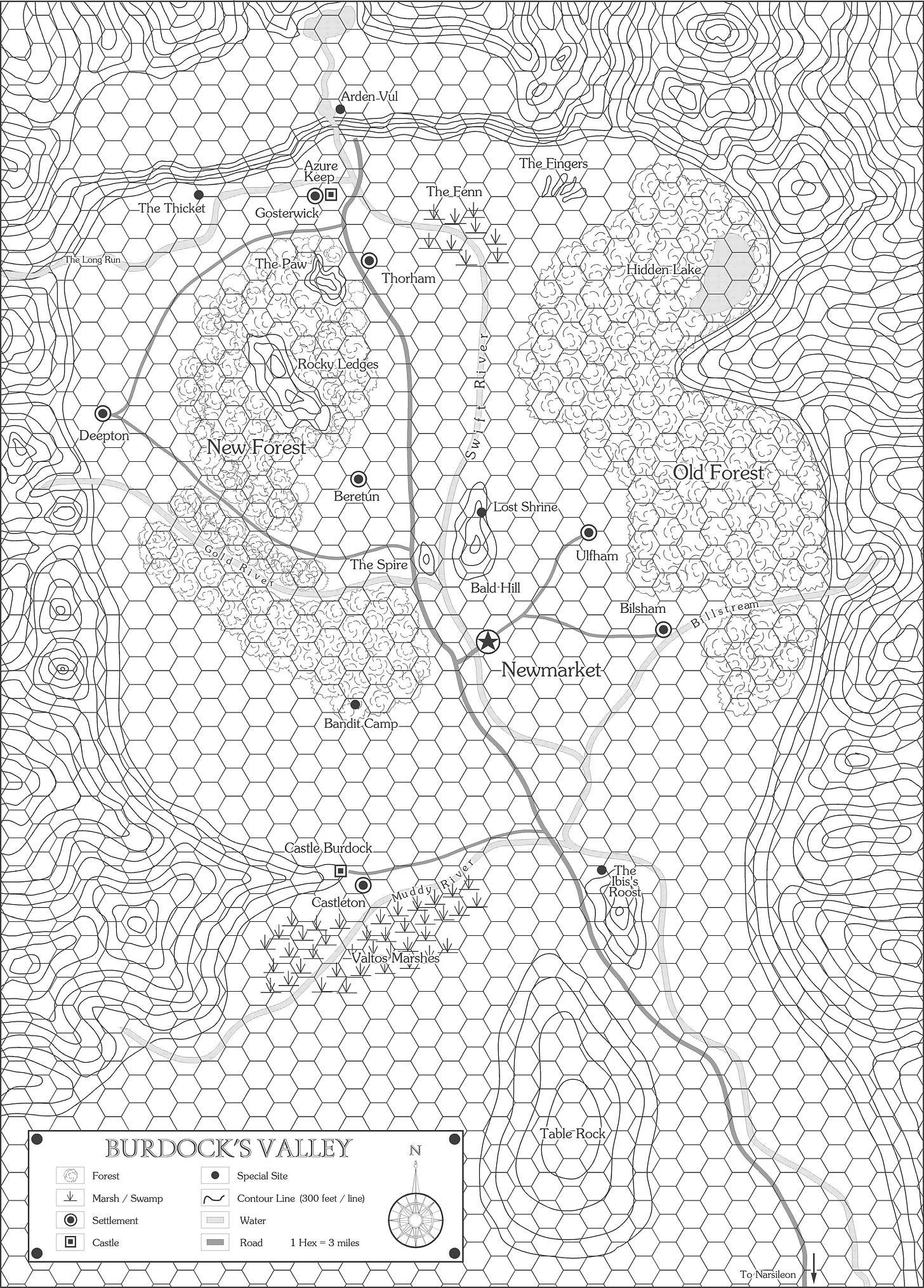
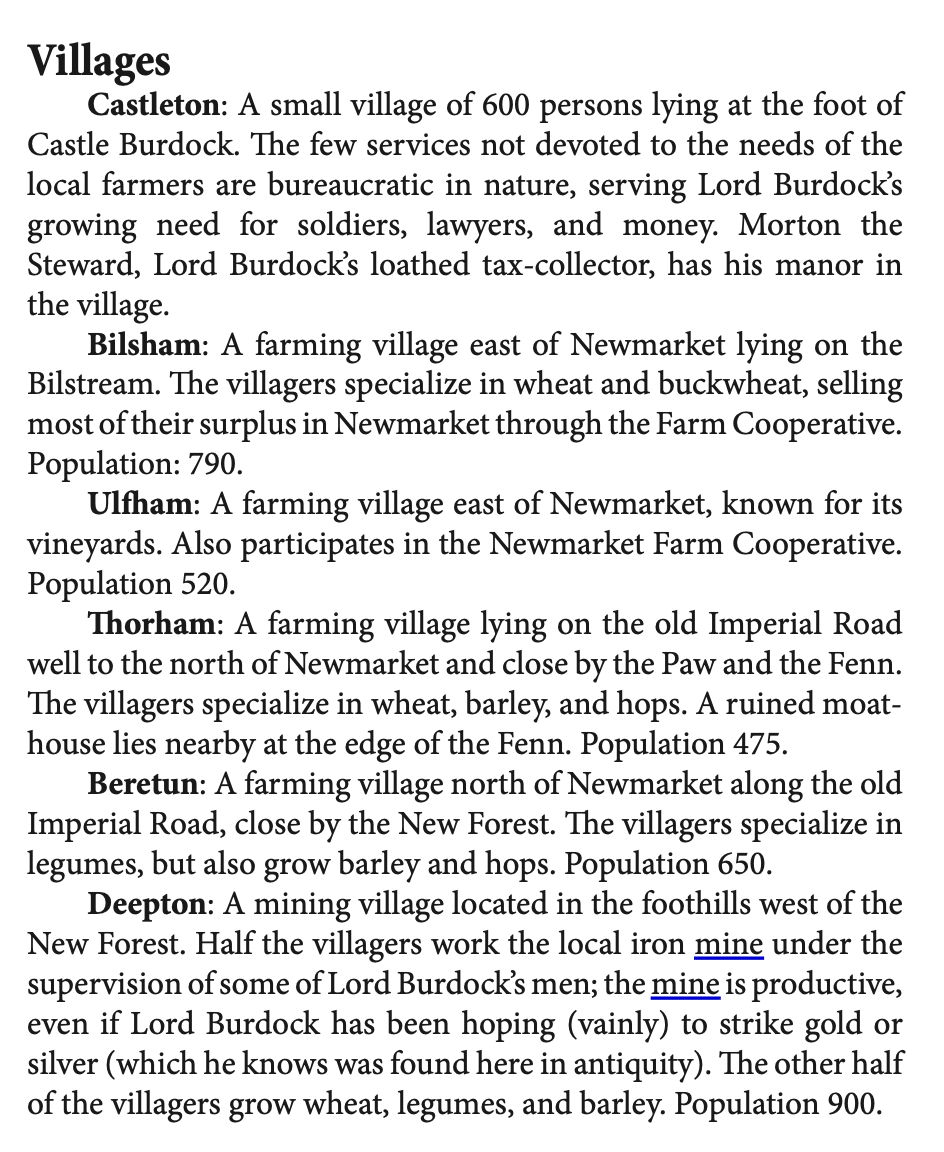

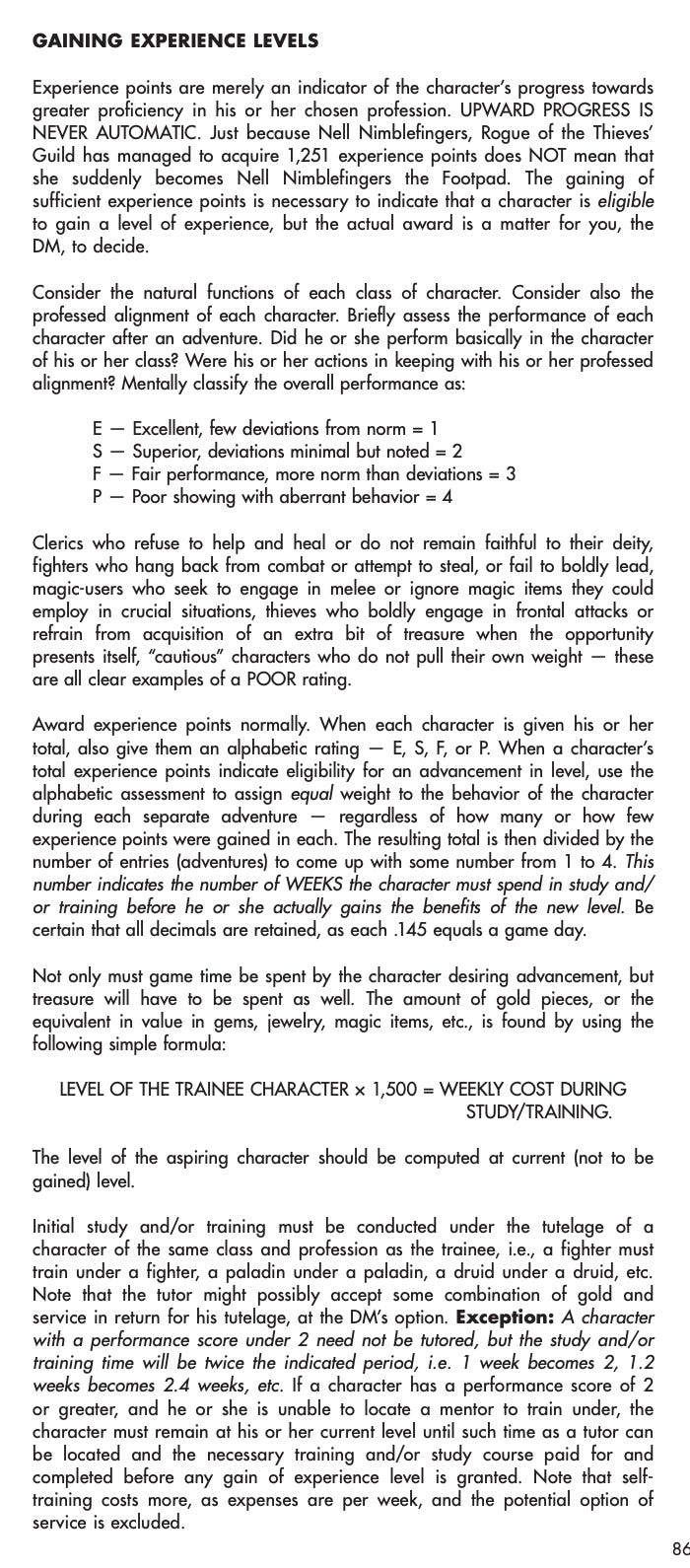
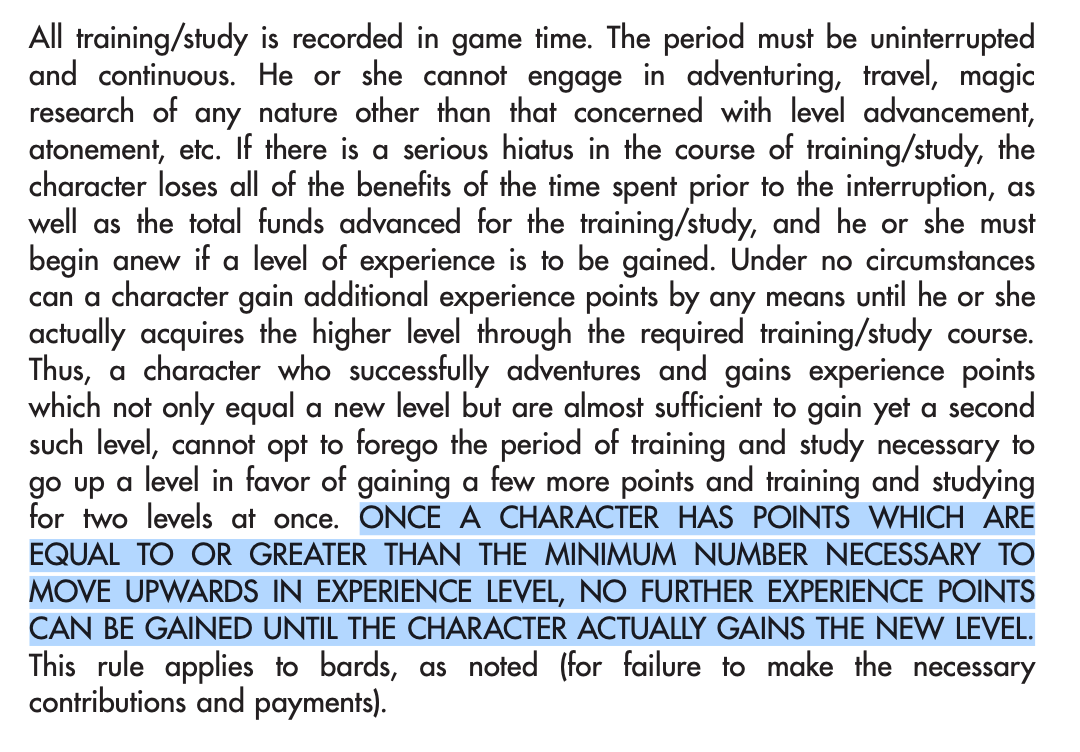

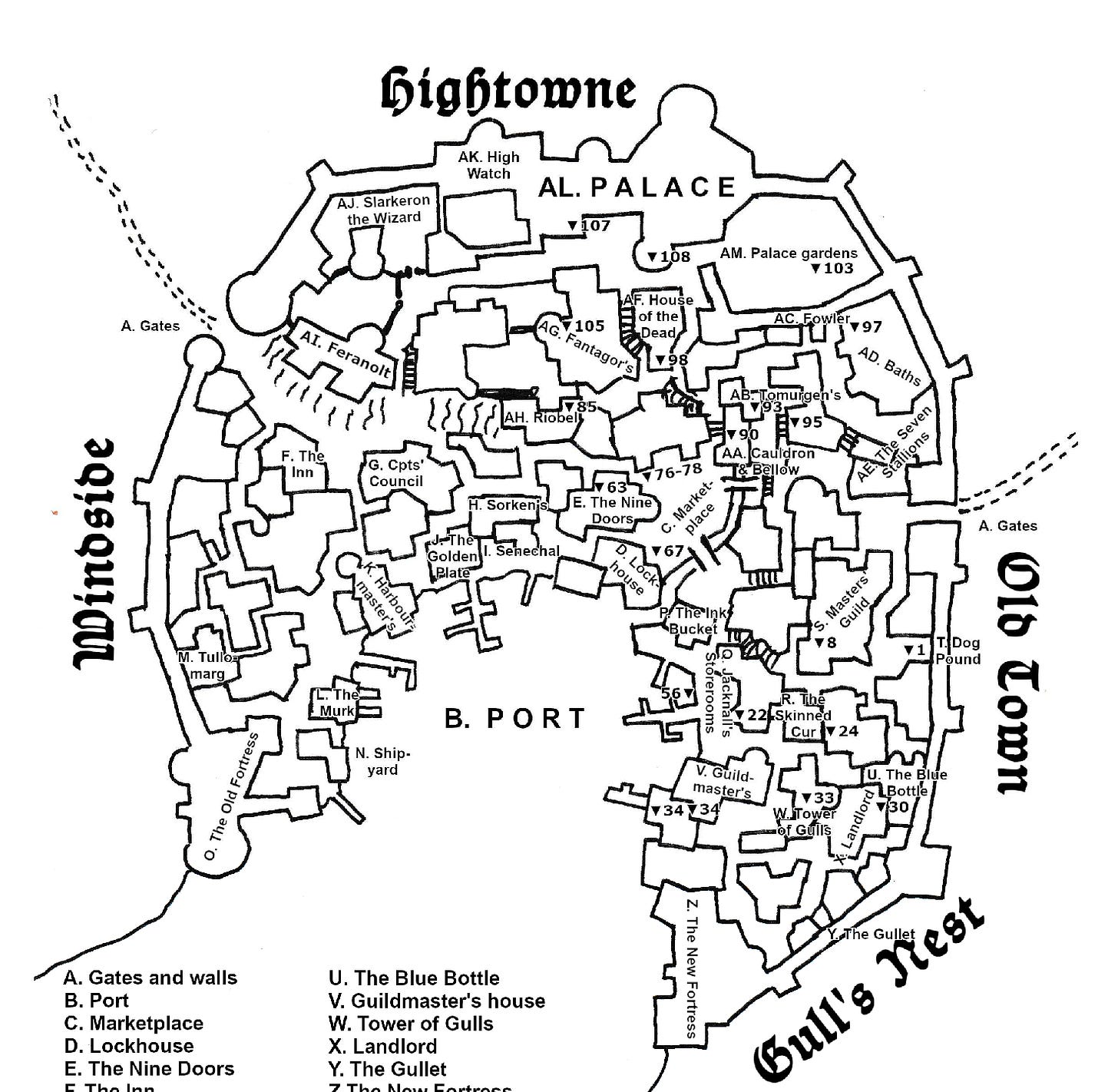
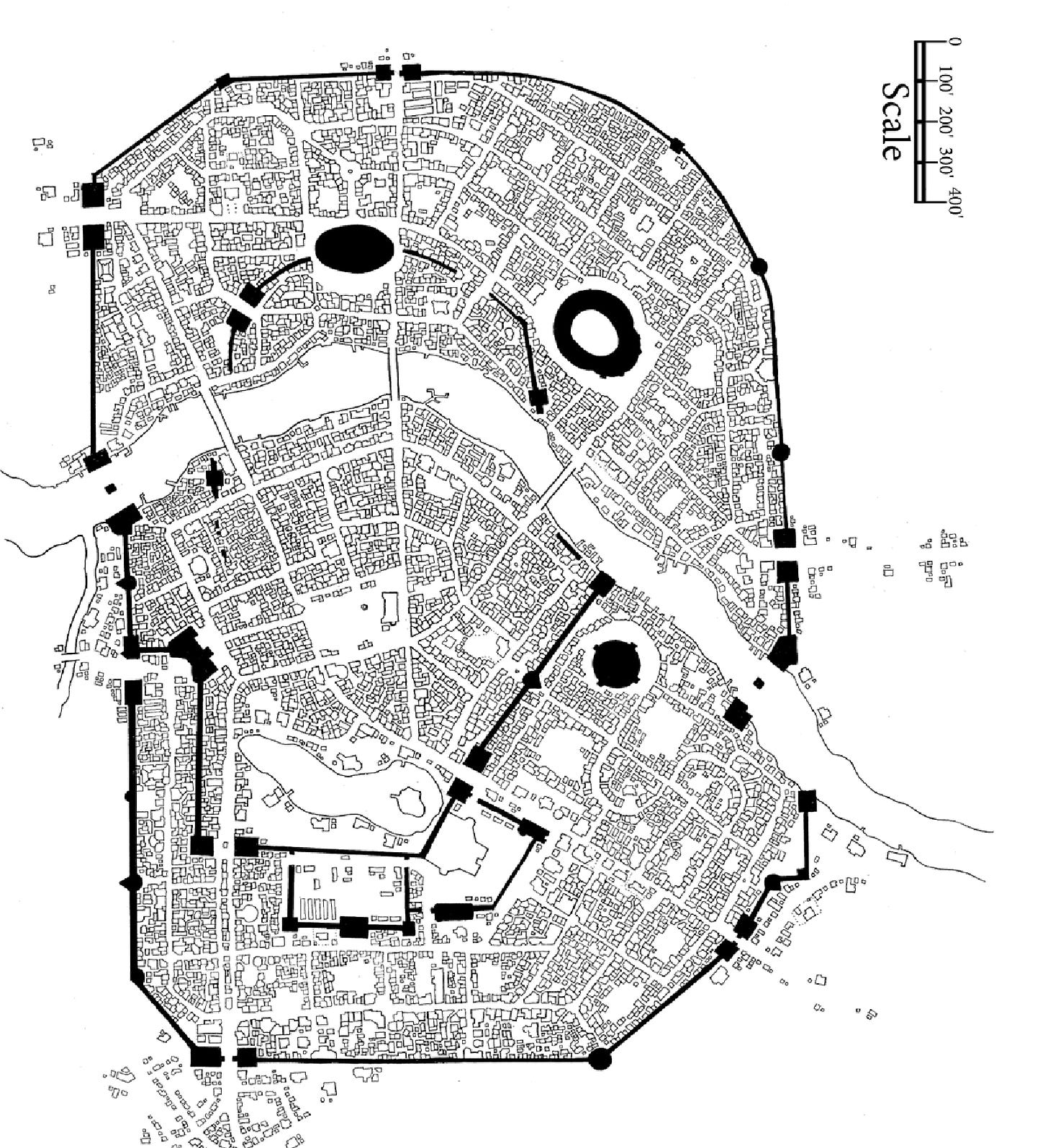
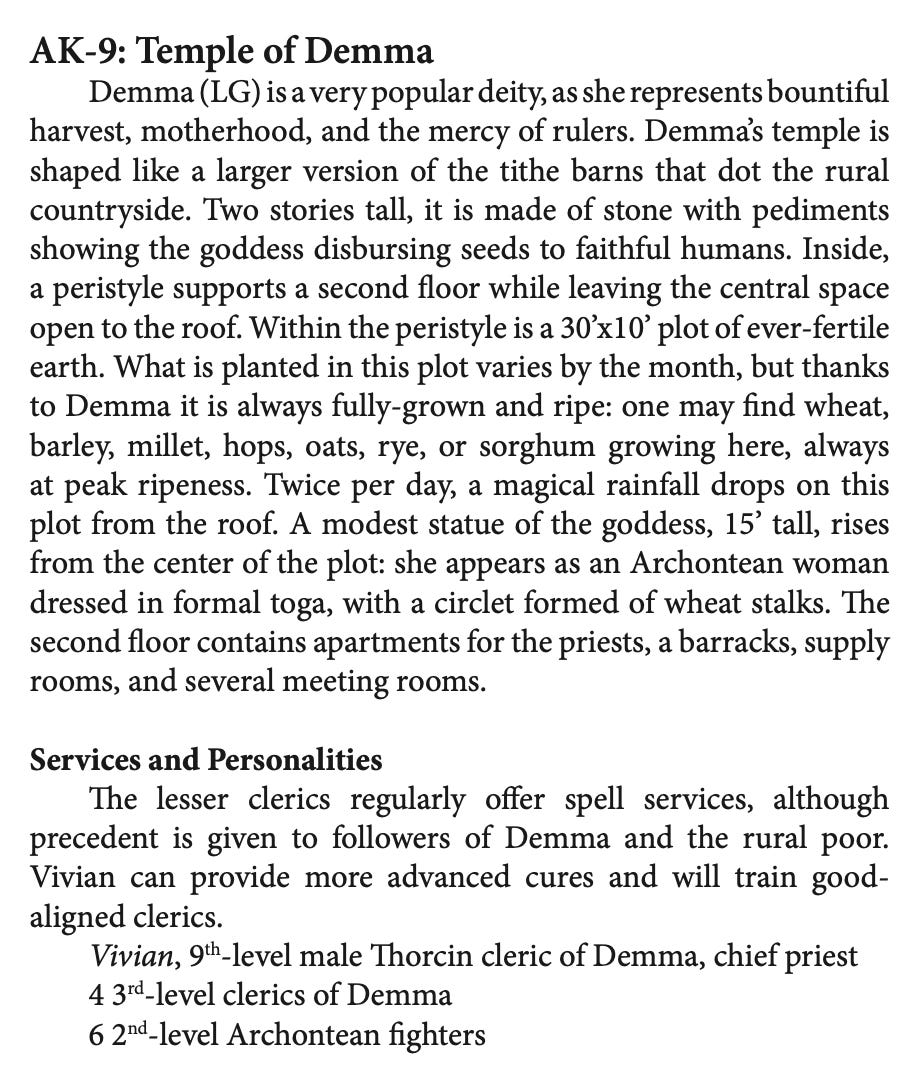

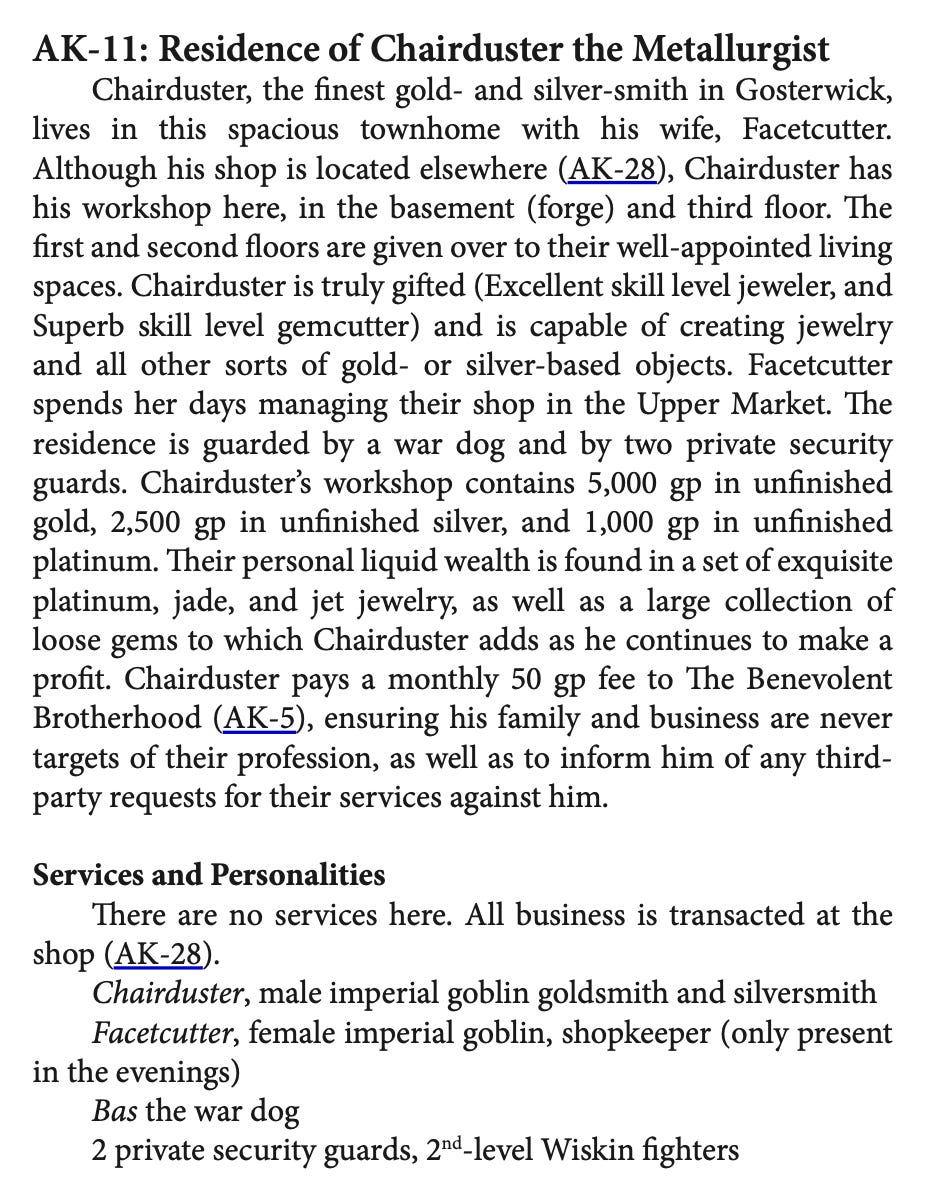
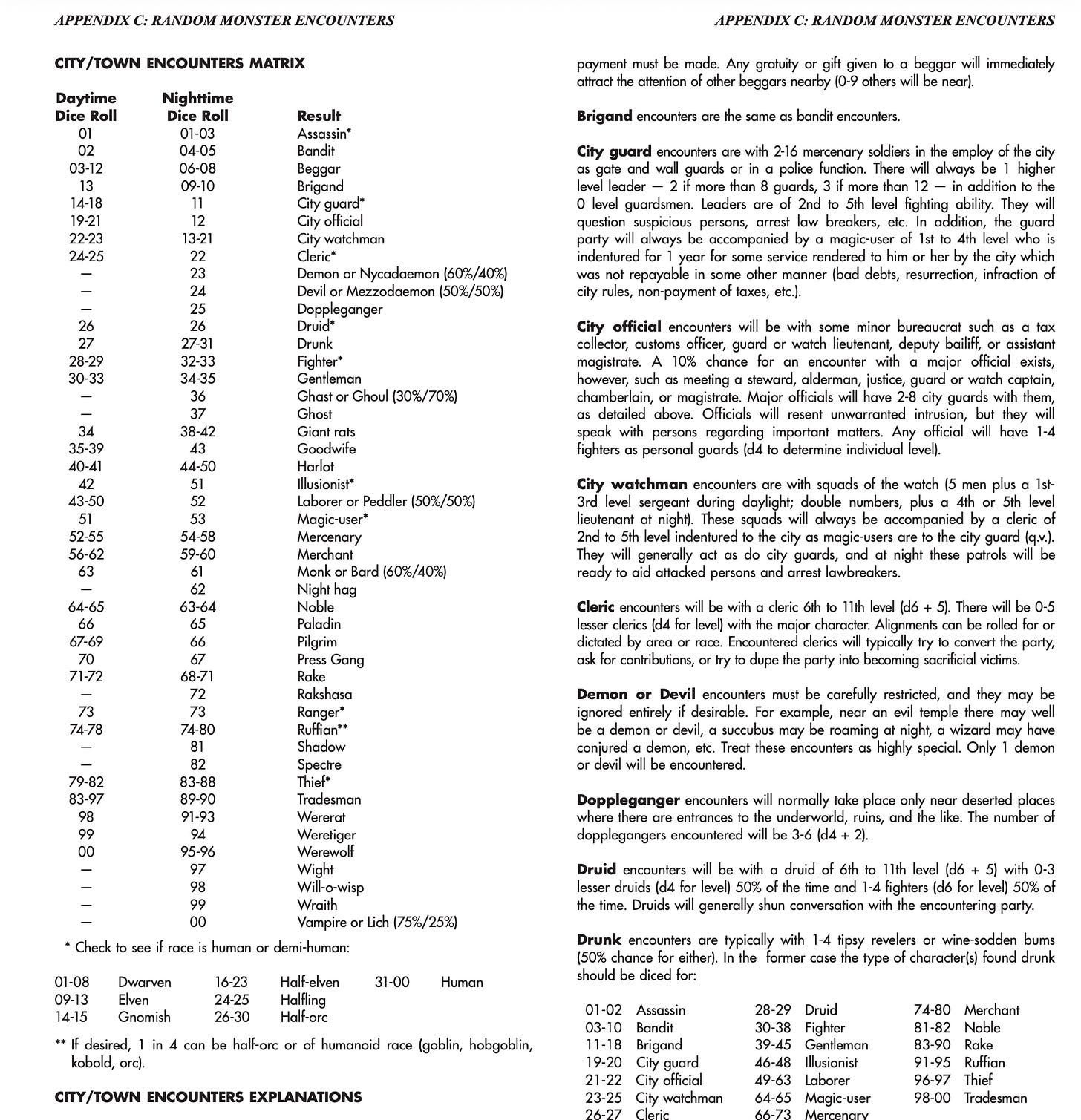
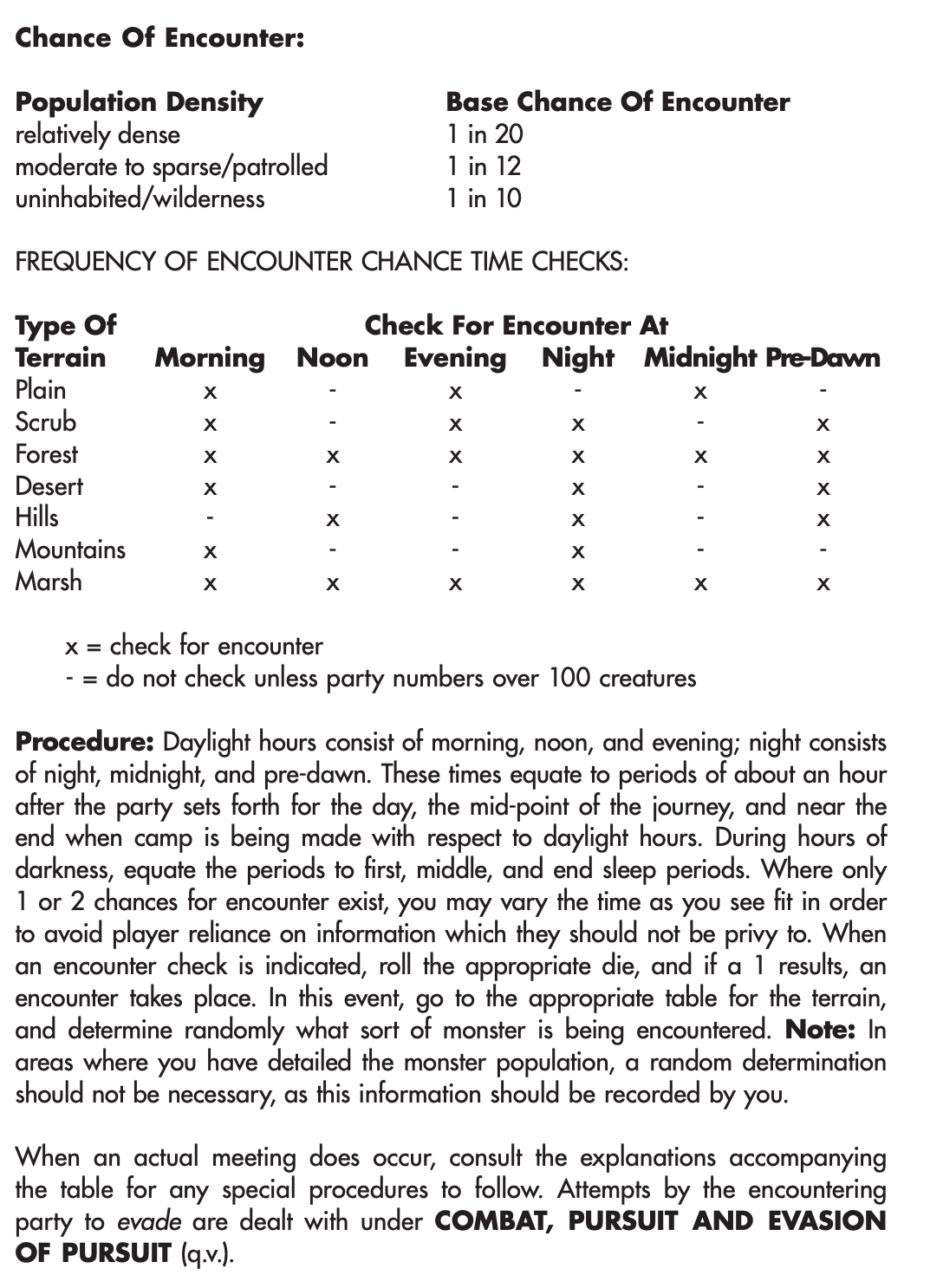

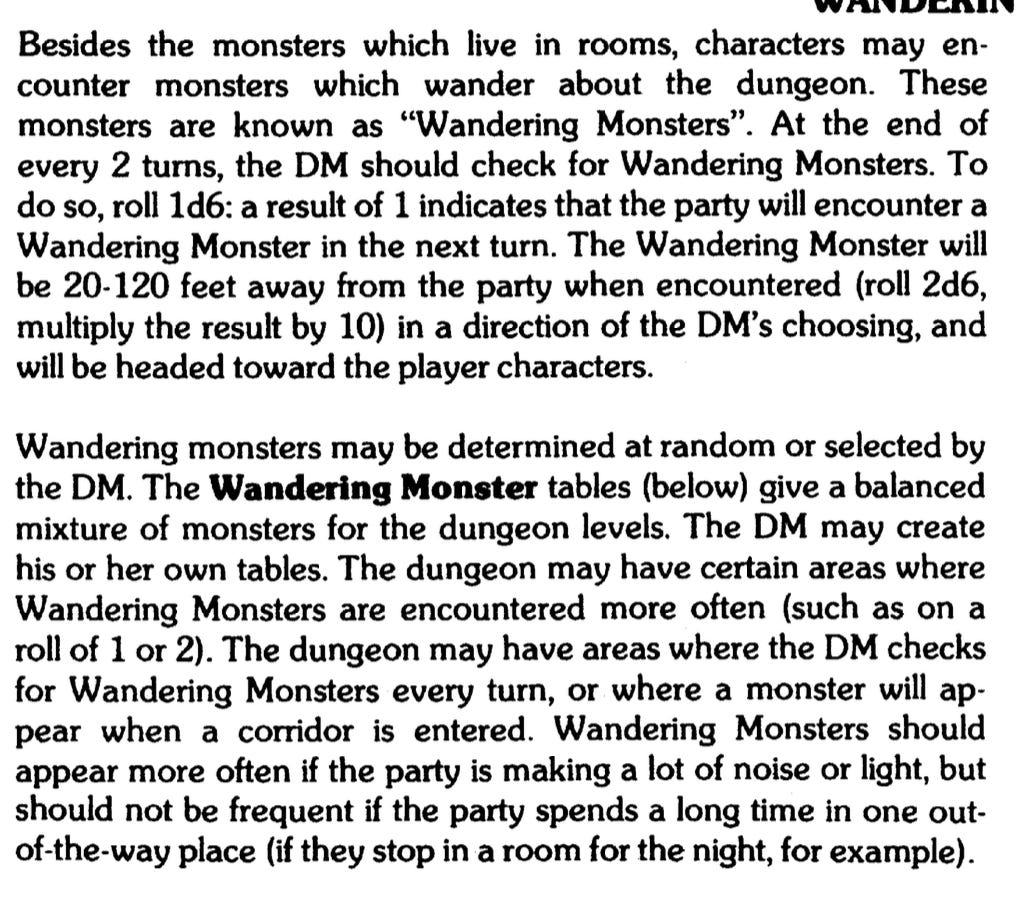
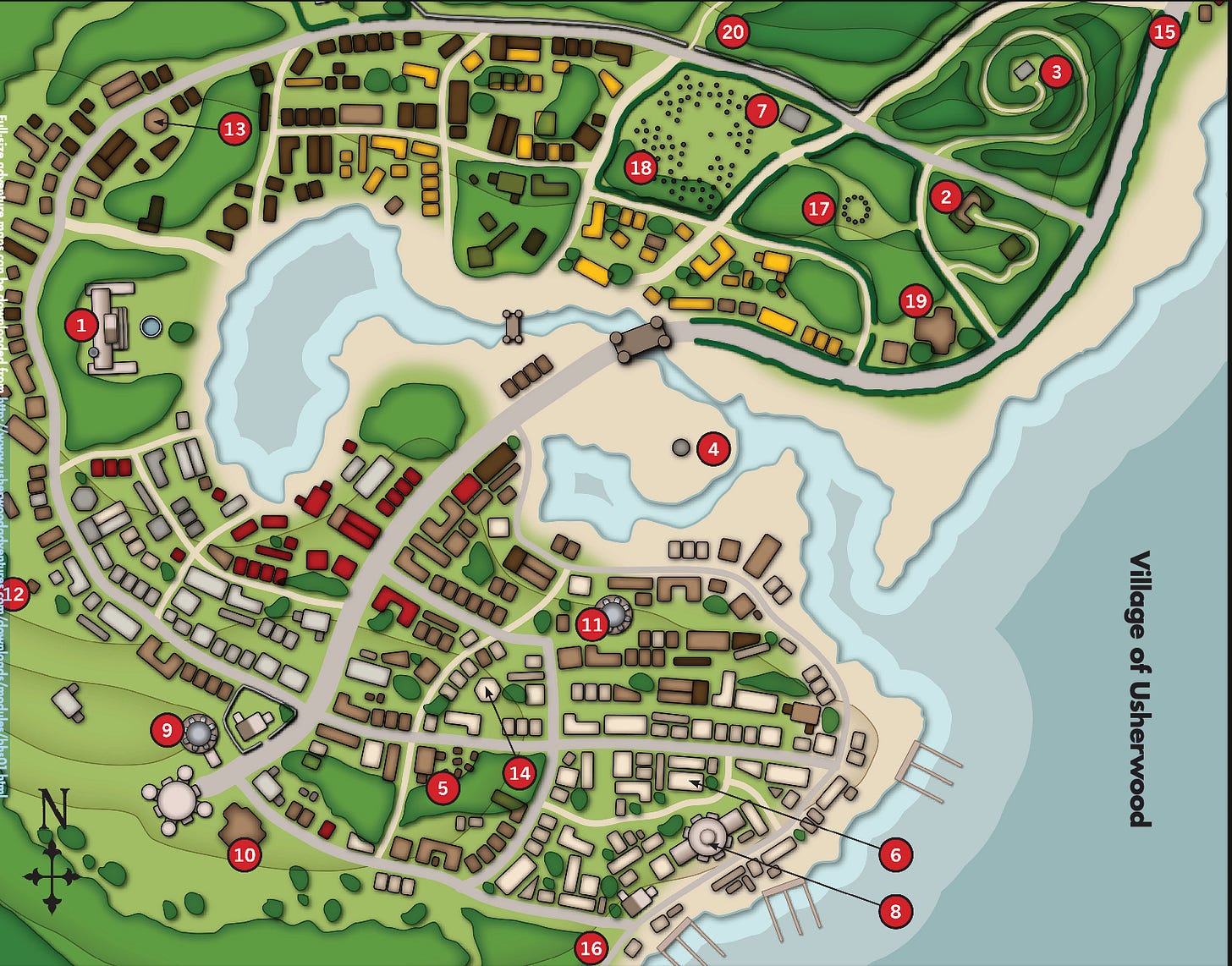
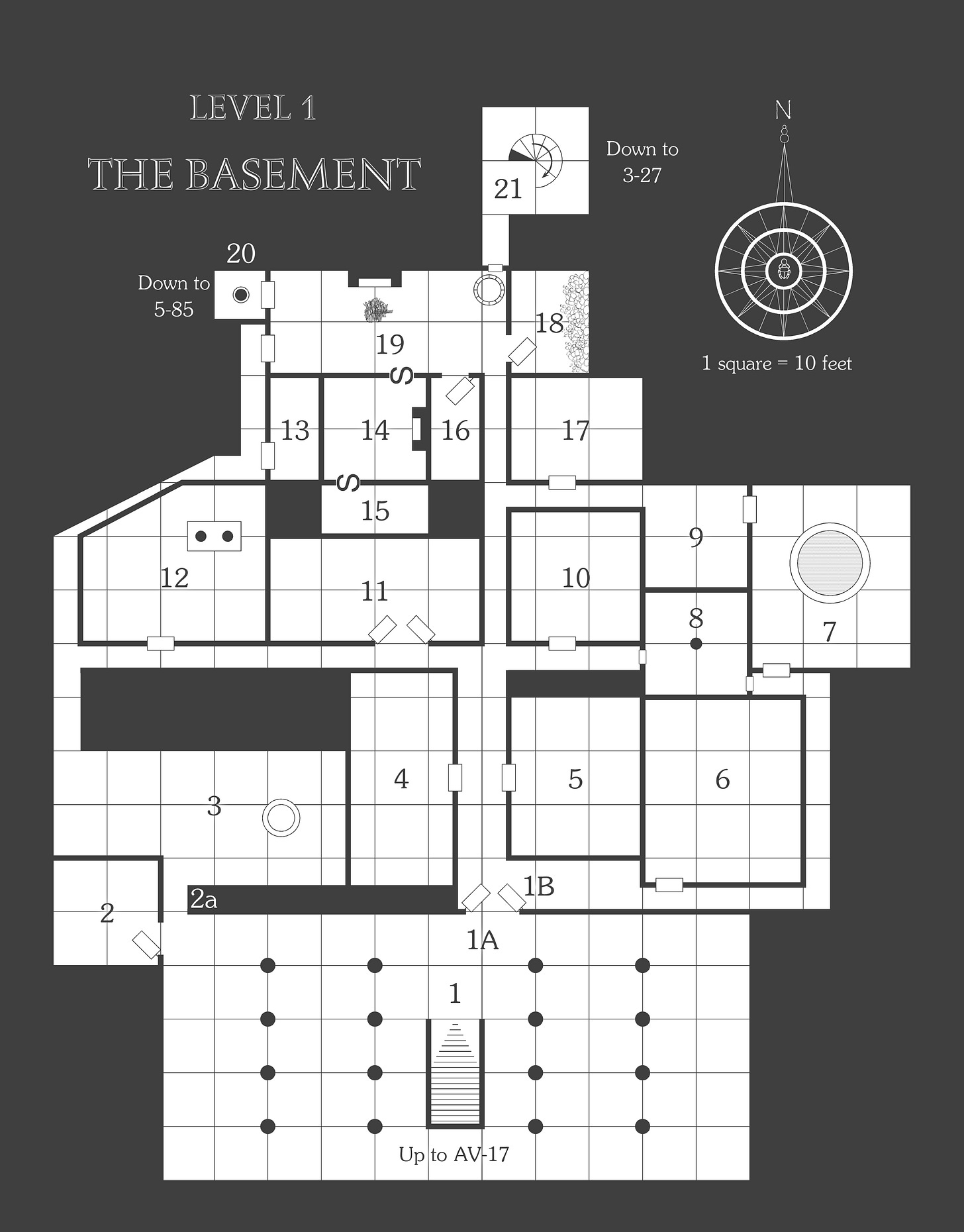
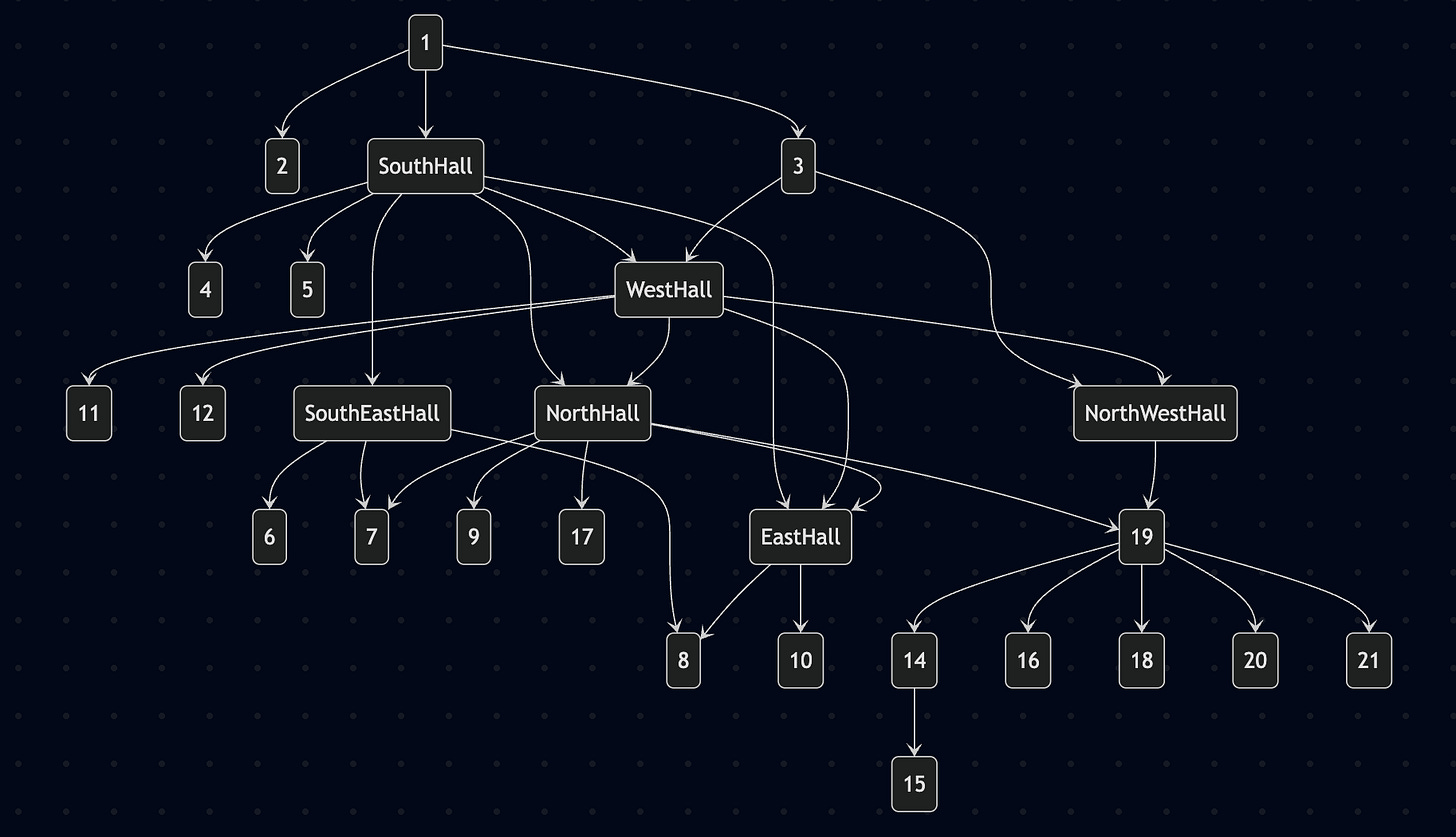



For running the book I actually rather like this chapter from a structural/game design perspective. The concentric rings of focus where locations nearer the dungeon directs the attention of the GM back to AV itself, but the details given are enough to improvise a short 15-30 minute diversion in session if needed.
I really like that the locations aren’t too interconnected - it feels like most areas have some mechanic to funnel the party either back into the dungeon itself or to someone who will direct them to the dungeon - Lord Burdock for instance, who needs treasure.
The villages are given enough detail that the information can be fed back to players and encourage them to move on to more interesting locations without explicitly stating “it’s a boring village”. Finding out that a settlement specialises in the production of legumes adds a little flavour to the setting and is better than nothing, but also clearly tells players to move on to something more interesting.
The adventuring locations could use a little more content, perhaps, but I figured they would just use the lair rules as a one off location that directs players back to Newmarket (bandits), Gosterwick or the dungeon itself.
As a setting it leaves a lot to be desired, but I think it works quite well as a quick and dirty region around the dungeon to make the world feel a little more lively while signposting “fun stuff this way”.
Similarly, I think Gosterwick works best when not played outside of a couple of social encounters. It’s place players go in between sessions or as bookends in a session and say “I want to do this” in an uncomplicated manner. It’s functional but not amazing, which is all it needs to be imo.